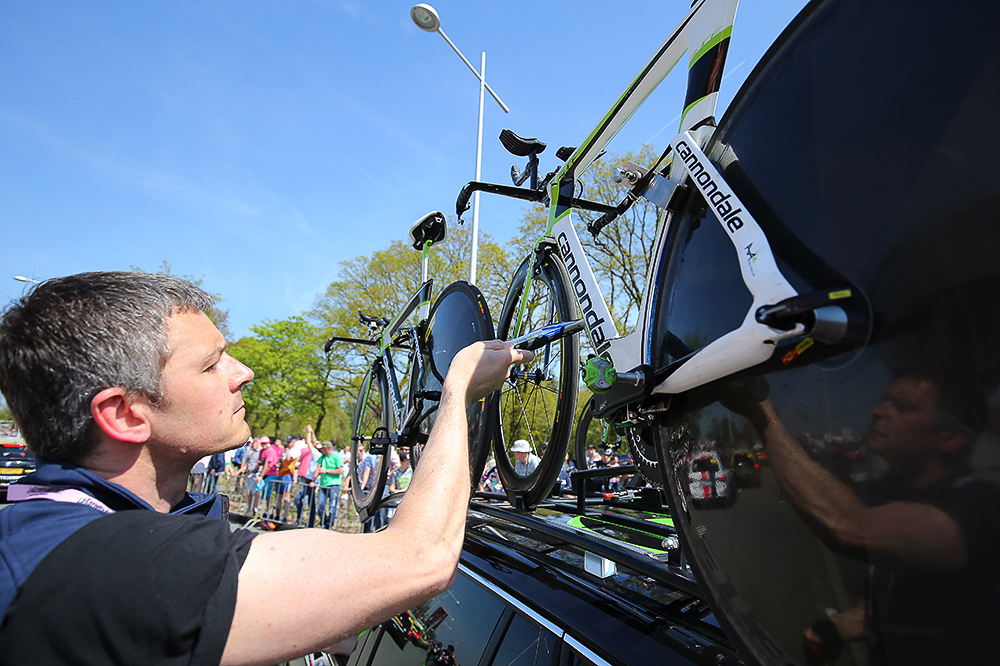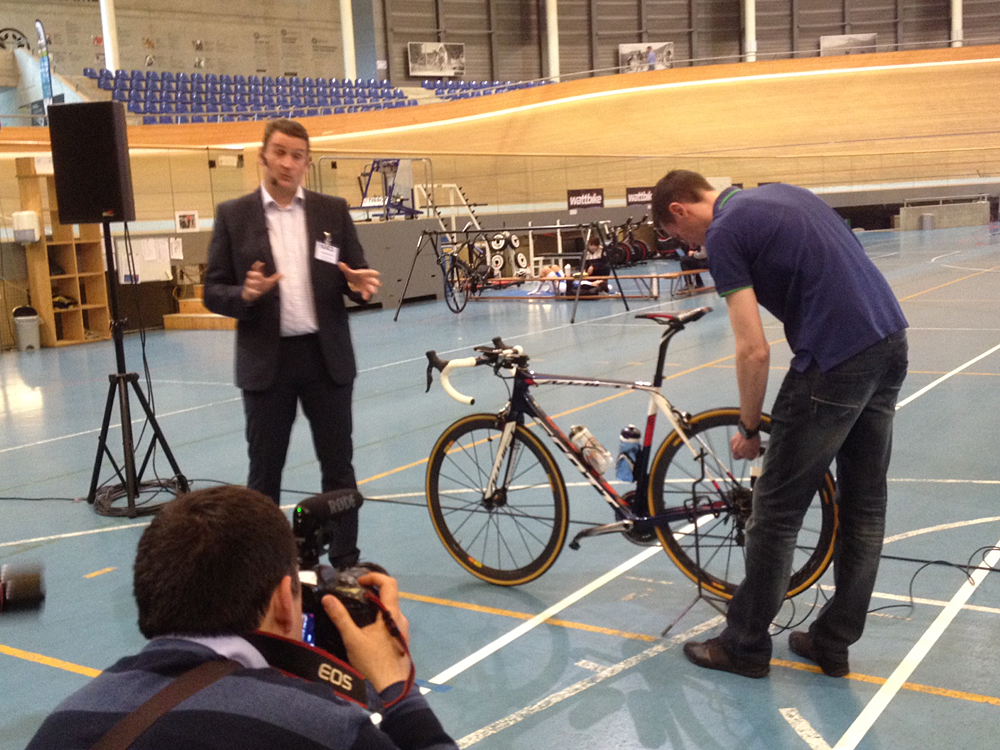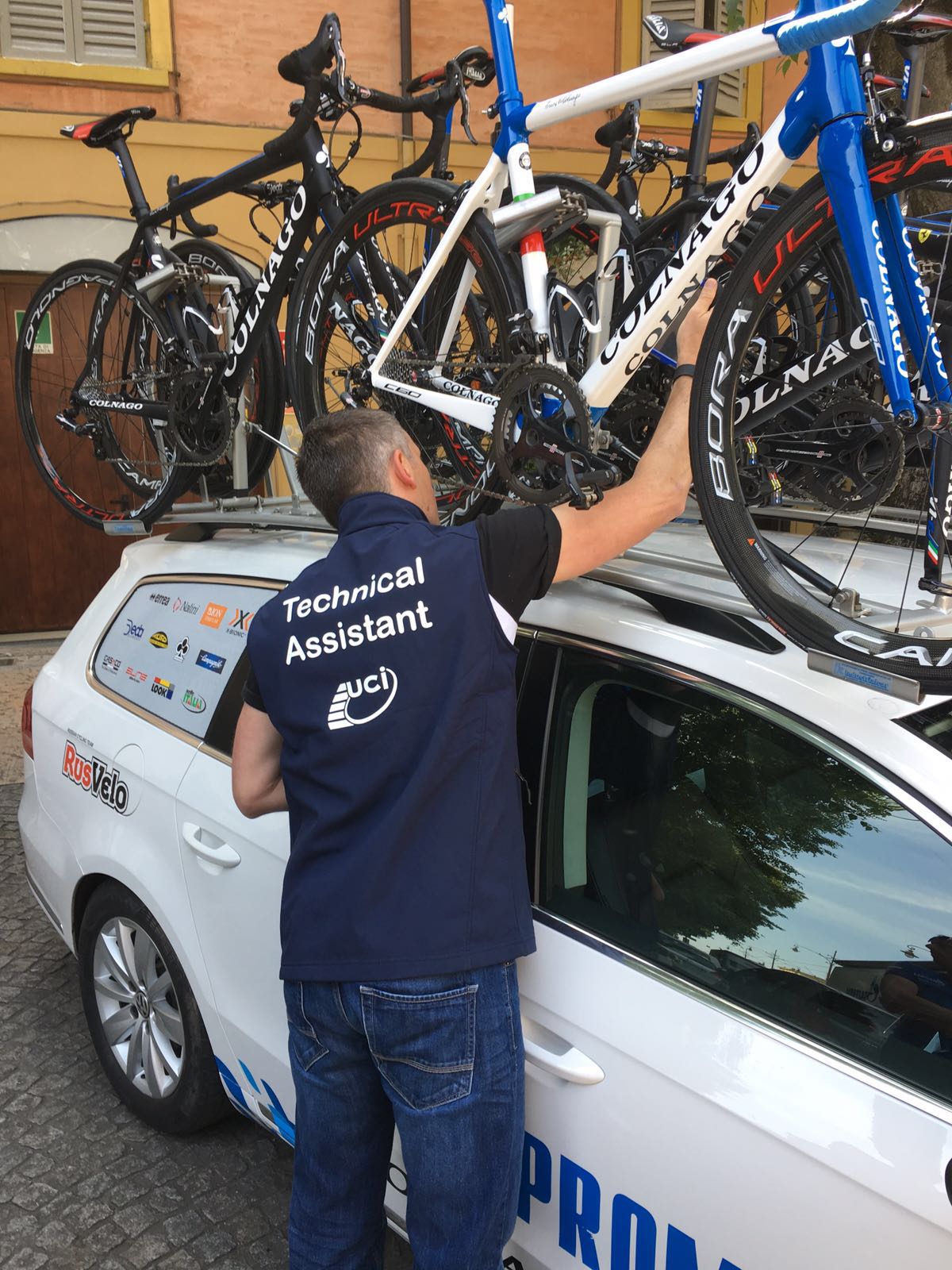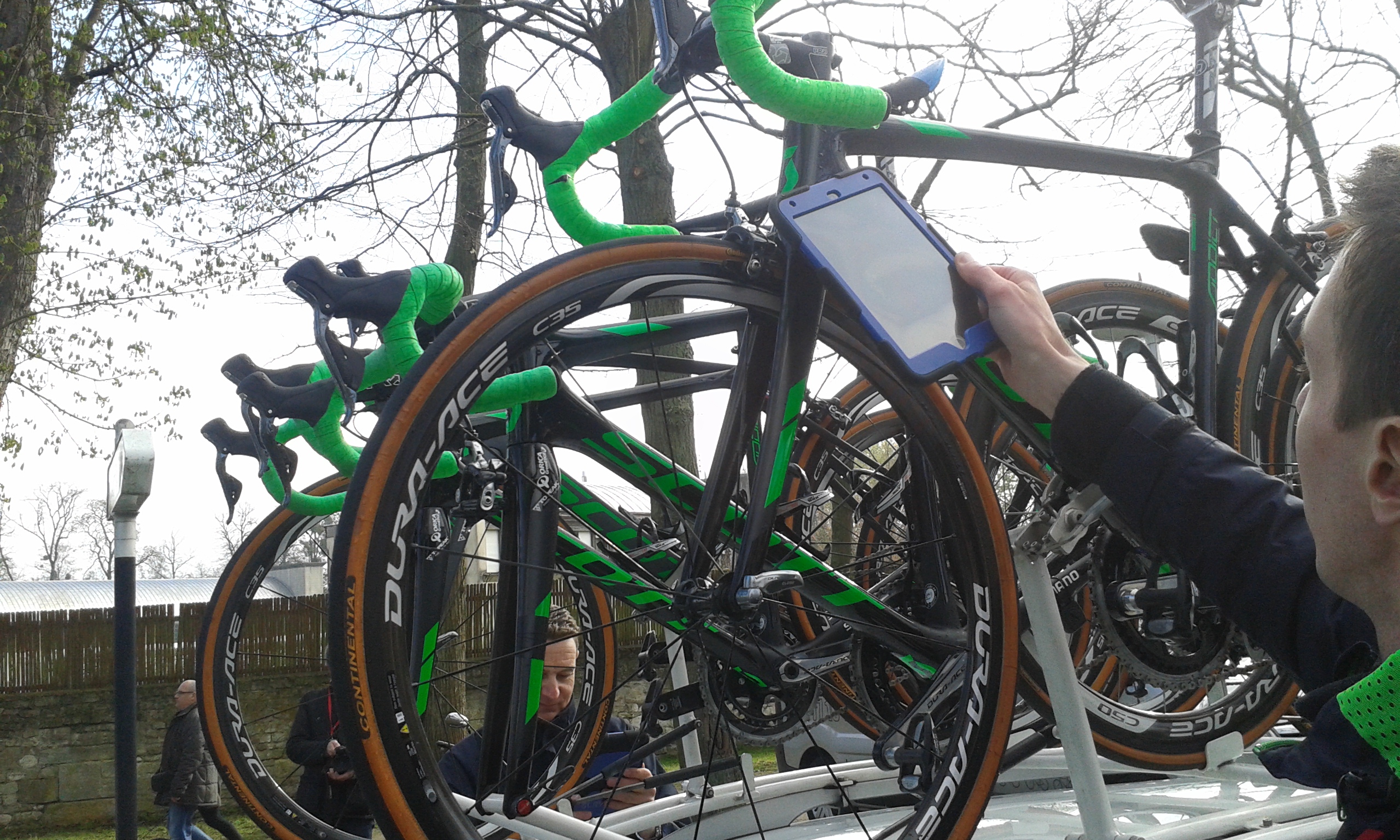UCI carry out further checks for mechanical doping at the Giro d'Italia
Bikes weighed after finish in Corvara, Chaves' bike just 70 grammes above 6.8kg limit




UCI Technical Manager Mark Barfield was at the Giro d'Italia on Saturday for stage 14, supervising checks for mechanical doping on numerous bikes at the start of the mountain stage and then further checks at the finish in Corvara.
Barfield confirmed that 113 bikes were checked at the start in Alpago and five bikes were checked at the finish. No irregularities were found. The UCI also checked the weights of five bikes at the finish and revealed that they were all above the 6.8kg limit.
Stage winner Esteban Chaves (Orica-GreenEdge) was closest to the limit, with his bike weighing in at 6.870kg. New race leader Steven Kruijswijk (LottoNL-Jumbo) was at 6.900kg, best young rider Bob Jungels (Etixx-Quickstep) came in at 7.00kg, leader of the mountain's classification Damiano Cunego (Nippo Vini Fantini) was at 7.240kg and Sebastian Henao (Team Sky) was a little heavier, with his Pinarello bike weighing 7.320kg.
Barfield and a UCI race commissaire spent time watching the race on television in an attempt to spot possible suspect bike changes during the stage. They were ready to tag any suspicions bike and take them to the podium or anti-doping truck area for any eventual further investigation and dismantling of bikes by team mechanics.
Barfield confirmed to Cyclingnews that the UCI has a new version of their magnetic flux density detector that they showed off at special demonstration in Aigle attended by Cyclingnews in early May. The often seen blue tablet device is still in use but the UCI also has a more robust, waterproof device to scan bike frames and wheels.
"The device works much like an active sonar device, putting out a magnetic signal and then detecting any interference with that signal from a hidden motor or battery," Barfield explained to Cyclingnews and Marco Bonarrigo of the Italian Corriere della Sera newspaper that used a heat detector to discover evidence that a hidden motors had been used in several professional races early in the season.
Little is known about the accuracy of the device and its ability to find second the much smaller generation motors and especially electromagnetic wheels but Barfield claimed the UCI active magnetic flux density detector can detect motors even if they are shielded by special metals and casings.
Get The Leadout Newsletter
The latest race content, interviews, features, reviews and expert buying guides, direct to your inbox!
Barfield also confirmed that testing for mechanical doping will be done by the UCI throughout the 2016 season, with the UCI having jurisdiction and responsibility for testing at major races such as the Tour de France and other WorldTour events. Race organisers or national anti-doping agencies will apparently not have any control or responsibility for checking for mechanical doping.
Cyclingnews understands that many national cycling federations are about to purchase a number of the tablet devices and will under go training on the bike testing techniques with the UCI next month.
To subscribe to the Cyclingnews video channel, please click here.

Stephen is one of the most experienced member of the Cyclingnews team, having reported on professional cycling since 1994. He has been Head of News at Cyclingnews since 2022, before which he held the position of European editor since 2012 and previously worked for Reuters, Shift Active Media, and CyclingWeekly, among other publications.